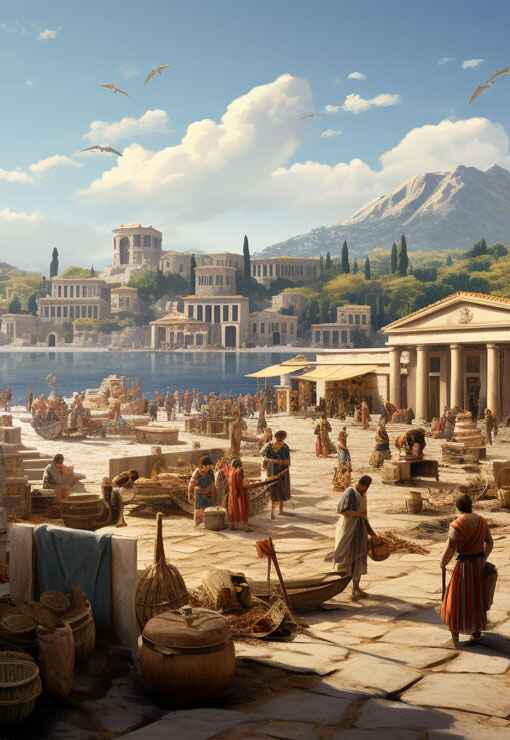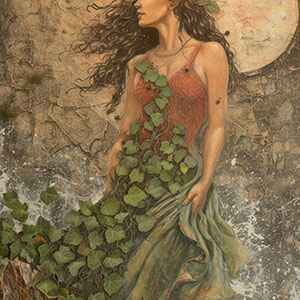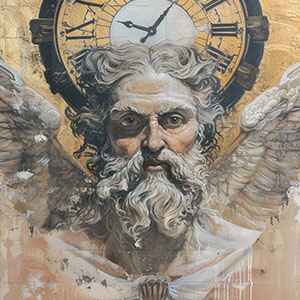Hecatonchires
In Greek mythology, Hecatonchires, also known as the Centimanes or Hundred-Handed Ones, were primordial beings with a hundred hands and fifty heads each. They were monstrous and powerful creatures associated with chaotic and elemental forces. Here are key aspects of the Hecatonchires in Greek mythology:
Parents: Uranus & Gaea
Siblings: Titans, Cyclops
Consort: NA
Children: NA
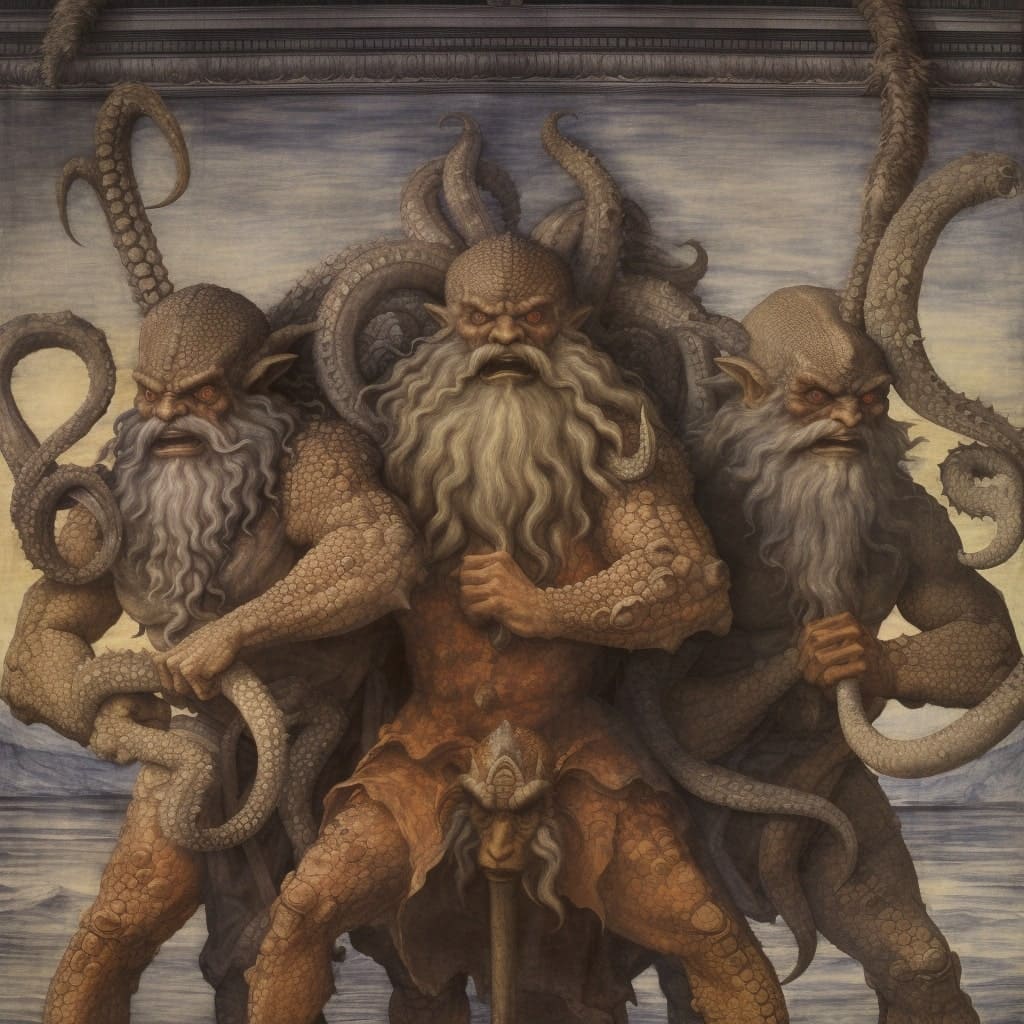
Origins: The Hecatonchires were born from the union of Uranus (the sky) and Gaea (the Earth). They were siblings to the Titans and the Cyclopes.
Imprisonment in Tartarus: Similar to the Cyclopes, the Hecatonchires were imprisoned by Uranus in Tartarus due to their monstrous appearance and immense power. Cronus later released them to gain their support in the Titanomachy, the war against the Titans.
Powers and Abilities: As their name suggests, the Hecatonchires had a hundred hands and fifty heads. Their sheer physical strength and multiple limbs made them formidable in battle.
Names of the Hecatonchires: The three Hecatonchires were named:
- Cottus: Also known as "Kottos" or "Kottos," he was associated with the concept of furious anger.
- Briareus: Also known as "Aegaeon" or "Obriareus," he was often described as having a hundred arms.
- Gyes: He was known for his enormous size and strength.
Role in the Titanomachy: During the Titanomachy, the Hecatonchires played a crucial role in the overthrow of the Titans. Their immense power contributed to the victory of the Olympian gods led by Zeus.
Imprisonment of the Titans: After the Olympians emerged victorious, the Hecatonchires played a role in the punishment of the defeated Titans. They were tasked with guarding the Titans in Tartarus, ensuring they remained imprisoned.
Symbolism of Chaos: The Hecatonchires are symbolic of the chaotic and elemental forces that existed in the early cosmos. Their release from Tartarus and involvement in the Titanomachy represent the struggle for cosmic order.
Cultural and Literary References: The Hecatonchires are mentioned in various ancient Greek literary works, including Hesiod's "Theogony." Their description as beings with numerous arms and heads evokes a sense of awe and terror.
Associations with Typhon: In some traditions, the Hecatonchires are associated with Typhon, a monstrous serpentine giant who challenged the authority of Zeus. The Hecatonchires are sometimes considered the offspring of Typhon and Echidna.
Variations in Depictions: Different artistic representations may vary in their depiction of the Hecatonchires, emphasizing their monstrous features and emphasizing their role as primordial beings.
The Hecatonchires, with their immense strength and monstrous appearance, represent the untamed and chaotic forces that predate the order established by the Olympian gods. Their role in the Titanomachy and their subsequent guardianship of Tartarus underscore their significance in the unfolding narrative of Greek mythology.
Immediate Family
Quick Facts
- Born from the union of Uranus and Gaea.
- Imprisoned in Tartarus by Uranus.
- Released by Cronus to aid in the Titanomachy.
- Had a hundred hands and fifty heads.
- Played a crucial role in the overthrow of the Titans.
- Guardians of Tartarus after the Titanomachy.
- Symbolic of chaotic and elemental forces.
- Mentioned in various ancient Greek literary works.
- Associated with Typhon in some traditions.
- Depictions may vary in different artistic representations.
Further Reading
Art &
Architecture
Ancient Greek art and architecture, with its harmonious proportions and timeless elegance, continue to inspire awe and admiration millennia later.
Discover
Greek Mythology & Mythical Characters
Greek mythology, a rich tapestry of gods, heroes, and mythical creatures, captivates the imagination with its tales of love, betrayal, and epic adventures that delve into the depths of the human psyche.
Discover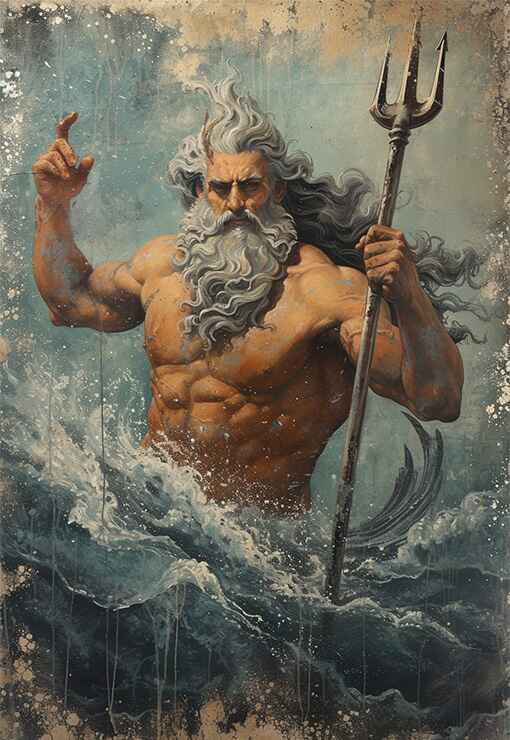
Ancient Greek History
Ancient Greek history, marked by remarkable achievements in democracy, philosophy, and warfare, shaped the foundation of Western civilization, leaving an indelible legacy of innovation and cultural influence that continues to resonate to this day.
Discover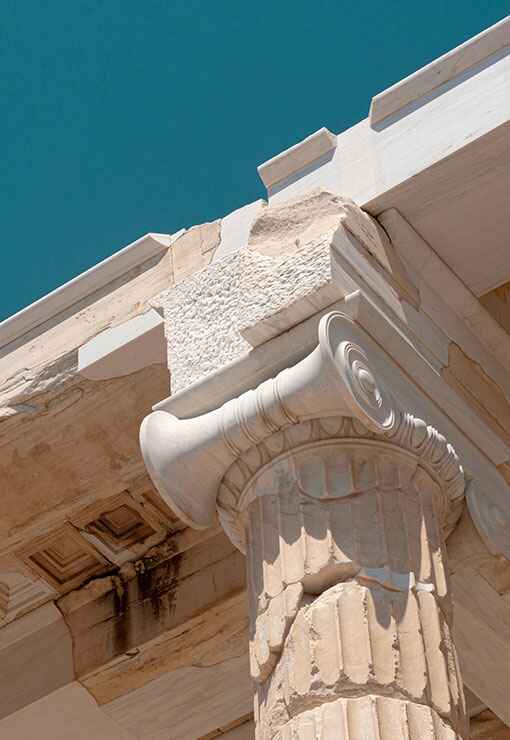
Ancient Greek Olympics
The ancient Greek Olympics, held in Olympia every four years, celebrated athleticism, unity, and cultural pride, serving as a testament to the enduring spirit of competition and excellence that transcends time and borders.
Discover
Ancient Greek Wars
Ancient Greek wars, such as the Persian Wars and the Peloponnesian War, were pivotal conflicts that shaped the course of history, highlighting the struggle for power, independence, and the clash of civilizations in the ancient Mediterranean world.
Discover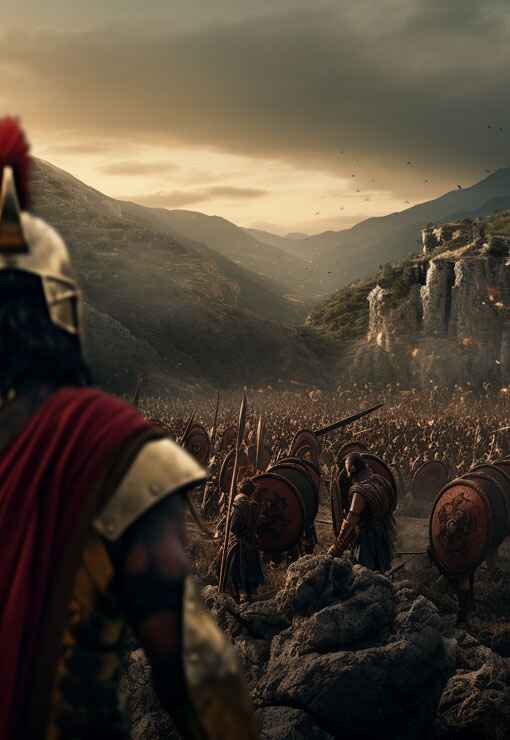
Ancient Greek Culture and Society
Ancient Greek culture and society, characterized by its emphasis on art, philosophy, and civic engagement, fostered a vibrant intellectual and social landscape where innovation flourished, democracy thrived, and the pursuit of knowledge and excellence was celebrated as fundamental values of civilized life.
Discover